Programs » Support and Travel Grants
2018 PARTICIPANTS IN THE CAA-GETTY INTERNATIONAL PROGRAM
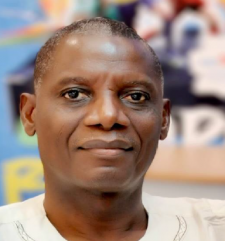
John Tokpabere Agberia is an artist, art historian, and curator. Graduating in 1983 from the University of Benin, Benin City, he began his academic career as a graduate assistant at the University of Uyo in 1985. He received an MA in art history at University of Ibadan in 1988 and a PhD from the University of Port Harcourt in 1998. Agberia has received several distinguished fellowships from the United Kingdom, including the AG Leventis fellowship at School of Oriental and African Studies (SOAS), University of London (1995), the Sainsbury Research fellowship of Sainsbury Research Unit at the University of East Anglia (1997), and the University of Oxford’s Titular fellowship at the Pitt Rivers Museum (2009). At Oxford Pitt Rivers, he worked with Jeremy Coote, the Joint Head of Collections where he began studying museums, cultural heritage, and curating. He has since become an active curator in Nigeria. Agberia is a professor of fine arts and design at the University of Port Harcourt, Nigeria.
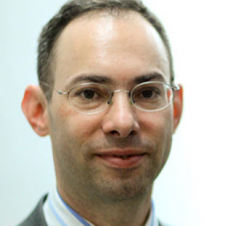
Felipe Soeiro Chaimovich was born in Santiago, Chile, and lives in São Paulo, Brazil. He earned a PhD in philosophy from the University of São Paulo and is a professor of art history, aesthetics, and art criticism at the Arts Faculty of Fundação Armando Álvares Penteado as well as the chief curator of the Museum of Modern Art, both located in São Paulo. He has three areas of academic research: mirrors as the origin of contemporary art, the confusion between gardens and nature in the ecological debate, and the aesthetics of taste and table manners. He has curated Sao Paolo’s International Garden Festival at Ibirapuera Park (2010) and Encounters of Art and Gastronomy at the city’s Museum of Modern Art (2012). Chaimovich is currently finishing a book on the origins of contemporary art that explores optics and the invention of perspective, Versailles, the relationship between mirrors and paintings, and the emergence of a new, self-reflexive working process in early 20th century art.
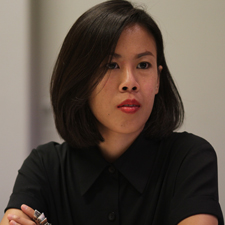
Thanavi Chotpradit is a lecturer in modern and contemporary Thai art history in the Department of Art History, Faculty of Archaeology, at Silpakorn University, Bangkok, Thailand. She is also a member of the editorial collective of Southeast of Now: Directions in Contemporary and Modern Art, a peer-reviewed journal dedicated to study of contemporary and modern art in Southeast Asia. She received her PhD in art history from Birkbeck, University of London, under a Royal Thai Government Scholarship. In 2015-16, Chotpradit participated in a cross-regional research program, “Ambitious Alignment: New Histories of Southeast Asian Art,” developed by the Power Institute Foundation for Art and Visual Culture, University of Sydney, Australia, and funded by the Getty Foundation’s Connecting Art Histories initiative. Her areas of interest include modern and Thai contemporary art in relation to memory studies, war commemoration, and Thai politics.
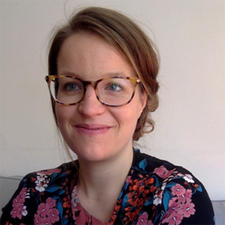
Katarzyna Cytlak is a Polish art historian based in Buenos Aires, Argentina, whose research focuses on the artistic creation of Central Europe in the second half of the twentieth century. As seen through a transmodern and transnational perspective, she studies conceptual art, radical and utopian architecture, socially engaged art, and art theory in relation to post-socialist countries. In 2012 she received a PhD from the University Paris 1 Panthéon-Sorbonne with a dissertation titled “The Grey Utopias: Architectural Projects in Central Europe in the 1970s.” Selected publications include articles in Umění/Art, Eadem Utraque Europa, Telón de Fondo, Third Text, and the RIHA Journal. Cytlak is currently a postdoctoral fellow at the Consejo Nacional de Investigaciones Científicas y Técnicas, Argentina (CONICET) and at the University of San Martín, Argentina. Her areas of research include East European and Latin American conceptual art, decolonial theory, and art history and criticism in post-communist countries.
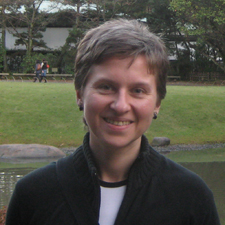
Anna Guseva is an associate professor in the School of History, Faculty of Humanities, National Research University Higher School of Economics (Moscow), where she has been a faculty member since 2014. She also directs a master’s program, “History of Art Culture and the Art Markets,” in the same department. Her research interests span both art and urban history in Russia and Asia in relation to food and rural history. Guseva graduated from the Lomonosov Moscow State University with a degree in art history in 1998 and received her PhD in architecture from the University of Tokyo in the Fujimori-Muramatsu Lab in 2011. She has organized architectural exhibitions as an independent curator, including My Melnikov (2013) and Environmentally Friendly Japanese Architecture: Taira Nishizawa Architects (2013), both at the Moscow Architectural Institute, and the latter also at the House of Architects in Nizniy Novgorod. Guseva also writes reviews for professional journals and trade publications on architecture and Asian art.
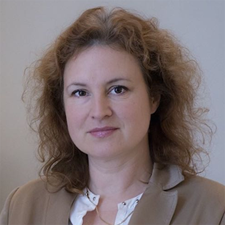
Markéta Hánová received a PhD in 2008 from Charles University in Prague, Czech Republic. Since 2000 she has been the curator of Japanese art at Prague’s National Gallery (NG). In 2012 she became the director of the Collection of Asian and African Art at the same institution. Hánová’s fields of interest include Japanese painting, ukiyo-e prints and Japonisme. She organized the exhibition Japonisme in Czech Art at the NG in 2014, one of many she has curated for the museum. In collaboration with the Japanese museums of art in Wakayama and Chiba she is currently developing an exhibition titled Japonisme in the Czech Lands to be presented in Japan in 2019. Her current research focuses on the popularity of collecting Japanese woodblock prints in the Czech lands in the late nineteen and early twentieth centuries. She has also reconceived the installation of Asian art at the NG Prague.
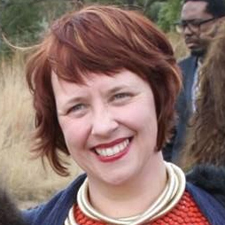
Alison Kearney is a Johannesburg-based artist and scholar of South African art, who lectures on art education in the School of Education at the University of the Witwatersrand (Wits). She obtained her PhD, titled “Beyond the Readymade: Found Objects in Contemporary South African art,” from Wits in 2016. She completed her master’s degree in fine art (with distinction) from the same university in 2004. Through her research Kearney interrogates the continuities and ruptures between African and Western art practices by critically exploring the ways in which Western avant-garde art practices and their attendant theories have informed contemporary African art. Kearney’s artworks have been featured in numerous exhibitions in South Africa, Switzerland and Australia. She has published scholarly work on contemporary South African art and develops education materials that facilitate particular engagements with art for the Wits Art Museum.
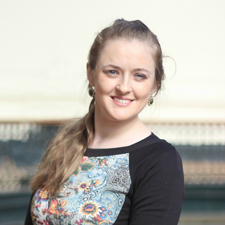
Natalia Keller is a graduate of Warsaw University (BA, 2010) and Utrecht University (MA, 2013), and a museum professional in a variety of cultural institutions in Europe and South America. Since 2014 she has been a researcher in the Collection Department of the National Museum of Fine Arts in Santiago de Chile where she studies its foreign works of art and their place within a Latin American context. Her research interests include prints and drawings, gender studies, and women artists. Keller has directed and participated in research and exhibition projects about female devotion in the Late Middle Ages, women’s involvement in the Academy during the 19th century, and contemporary Chilean women artists. She is especially interested in presenting art through the perspective of gender studies and visual and material culture, as well as through themes of community engagement and social justice.
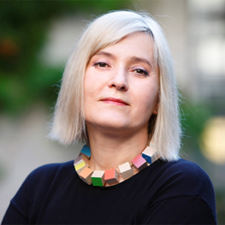
Sandra Križić Roban received a PhD from the Department of Art History, Faculty of Philosophy, at the University of Zagreb, Croatia. Active as a critic, curator, lecturer, and writer, Križić Roban is a senior research advisor at the Institute of Art History in Zagreb, where she also serves as editor-in-chief of the art journal Život umjetnosti. Together with colleagues she established the Office for Photography in 2013, a nonprofit association dedicated to researching and promoting contemporary photography. She is the author of the only two comprehensive studies of contemporary photography and painting in Croatia: At Second Glance: the Position of Contemporary Croatian Photography (2010), and Croatian Painting from 1945 to Today (2013). Within the project Postmedia and Non-institutional Art Practices from the 1960s she has organized three international conferences on contemporary arts. Križić Roban’s main research topics include contemporary art, history and theory of photography, post-war architecture, public space discourse, and contemporary war memorials.
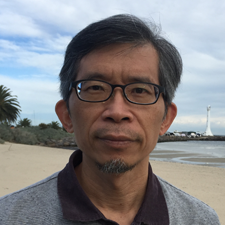
Hsin-tien Liao holds PhDs in art history (University of Central England in Birmingham, UK) and sociology (National Taiwan University, Taipei, Taiwan). He is the dean of the College of Humanities at the National Taiwan University of Arts and also teaches at the school’s Graduate School of Art Management and Culture Policy. From 2010-13 he was a senior lecturer at Australian National University where he is now an honorary professor. Liao’s research focuses on calligraphy, Taiwanese art, the sociology of art, and postcolonial visual art. Recent publications include The Tension of Art: Taiwanese Fine Art and the Politics of Culture (2010), Extending Knowledge through Investigating Art (2013), and A New Thinking on Taiwanese Art: Framework, Criticism, and Aesthetics (2017). He has written biographies about two modern Taiwanese printmakers: Liao Shiou-ping (2016) and Li Xi-chi (2017). In 2013 he published a Chinese translation of Kenneth Clark’s Landscape into Art. In 2016, he established the Taiwanese Art History Association and became its first chair.
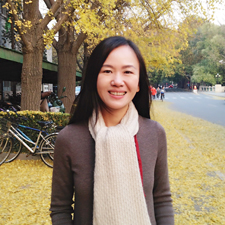
Chen Liu teaches art history and architecture at Tsinghua University in Beijing, China, where she received a bachelor’s degree in architecture with honors. After receiving a master’s in architecture and urban planning from the University of Maryland in 2000, she practiced as an architect in Washington DC until 2005. In 2011, she received a PhD in art history from Princeton University, specializing in Renaissance and Baroque art and architecture. In 2012, funded by an Andrew W. Mellow Fellowship, she helped create and direct the first Villa I Tatti summer research seminar designed specifically for Chinese scholars. “The Unity of the Arts in Renaissance Italy” provided participants with the opportunity to study firsthand the art and architecture of Renaissance Italy. Liu also teaches courses on the visual arts at Beijing Film Academy and Tongji University (Shanghai). She publishes widely on early modern art and architecture, as well as on the response of Chinese scholars to the Italian Renaissance.
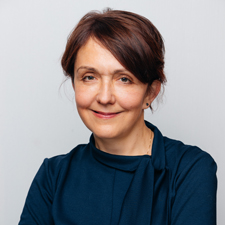
Natalia Moussienko is a leading research fellow at the Modern Art Research Institute of the National Academy of Arts of Ukraine (Kyiv). She is the author of numerous books and articles on art history, cultural diplomacy, cinema, and urbanism, including Art of Maidan (2016), Kyiv Art Space (2013), and Arts and Politics (2002). In 2016 the National Academy of Arts of Ukraine awarded Moussienko a Golden Medal for her achievements in cultural diplomacy. She was also awarded a Fulbright scholarship to conduct research at the Kennan Institute, Wilson Center, in Washington DC (2011-2012) and a Thesaurus Polonia fellowship to study at the International Cultural Center in Krakow (2017). Moussienko is an initiator and curator of the Art of Maidan, a continuing project begun in 2014 to document the explosion of artistic creativity during the Revolution of Dignity in 2013-14. Central to the project is a book and exhibition that has already been presented in sixteen locations in Ukraine, the United States, and Europe.
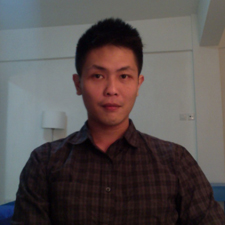
Simon Soon is a researcher and senior lecturer in the Visual Art Department of the Cultural Centre, University of Malaya, located in Kuala Lumpur, Malaysia. He completed a PhD in art history at the University of Sydney with a dissertation titled, “What is Left of Art? The Spatio-Visual Practice of Political Art in Indonesia, Singapore, Thailand, and the Philippines, 1950s–1970s.” Soon studies comparative modernities in art, urban histories, and art historiography and writes on various topics related to twentieth-century art across Asia. He is also a co-editor of Narratives of Malaysian Art, Vol. 4. He is the Penang field director for the Power Institute, University of Sydney’s “Site and Space of Southeast Asia,” funded by Getty Foundation’s Connecting Art Histories Initiative. He is also an editorial member of Southeast of Now: Directions in Contemporary and Modern Art, a peer-review journal published by NUS Press (National University of Singapore) and a team member of Malaysia Design Archive.
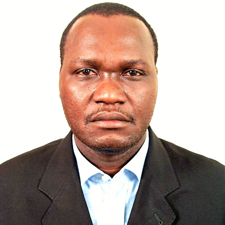
Romuald Tchibozo is an art historian from Benin. He received his PhD in 2003 from the Humboldt University of Berlin with a dissertation titled “Art and Arbitrary: a Study of the African Contemporary Art Reception in the West: the German Case from 1950 to the Present Day.” Currently, he is a senior lecturer of art history in the Archaeology and History Department, Faculty of Arts and Humanities, National Institute of Art, Archaeology and Cultural Craft, at the University of Abomey-Calavi, Benin. He also teaches art history at the Centre Régional d’Action Culturelle of Lomé in Togo. In 2013-14, Tchibozo was a fellow in the Art Histories and Aesthetic Practices program, an initiative of the Max-Planck-Institute at the Forum for Transregional Studies in Berlin. His research focuses on African contemporary art in the former German Democratic Republic, the evolution of contemporary art in Benin, and heritage issues, such as the Yoruba Gèlèdè Society and the practice of art history.
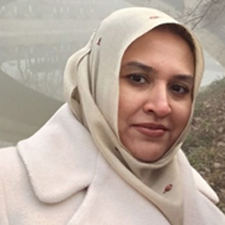
Sarah Umer is an assistant professor in the Institute of Visual Arts & Design at Lahore College for Women, the largest women’s university in Pakistan and one of the largest in South Asia. In addition to teaching undergraduate and graduate students, Umer organizes seminars and conferences with universities and museums on a national and international level. Her research interests include the study of ancient civilizations and religions, predominantly in the South Asian region. In 2016, Umer received a PhD from Lahore College for Women with a dissertation on the religious beliefs of the Indus Valley people. In early 2017, as a recipient of a Charles Wallace Fellowship, she probed this topic further at SOAS (School of Oriental and African Studies), University of London. In particular, she studied the cuneiform tablets of Mesopotamia to see if this civilization may have shared religious beliefs with the Indus Valley culture, in addition to their known trading connections.
PARTICIPATING ALUMNI
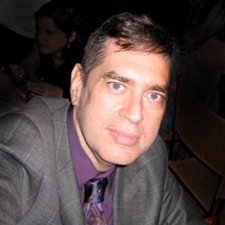
Cezar Bartholomeu is an artist and professor of art history at the School of Fine Arts, Universidade Federal do Rio de Janeiro (UFRJ), in Brazil. He received a PhD in visual languages from both the UFRJ and the École de Hautes Études in Paris. Between 2010-17 he was the editor-in-chief of Arte & Ensaios, one of Brazil’s major art journals. His areas of research include photography as art, photography’s history and theory, and photography in Brazil. As an artist, Bartholomeu exhibits widely in Brazil and Europe. His publications include Celebrações/Negociações – Fotografia Africana na coleção Gilberto Chateaubriand (African Photography in the Gilberto Chateaubriand Collection, Museum of Modern Art, Rio de Janeiro, 2011), “Emanation/Abjection” in Laboratório Público de Históra da Arte Mundial (Public World Art History Lab, Rio de Janeiro: UERJ, 2014), and “Thirty Times Failed: Valério Vieira and Experimental Photography in Brazil” in Photography and Failure (New York: Bloomsbury, 2017).
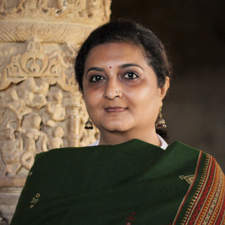
Parul Pandya Dhar is an associate professor of South and Southeast Asian art history in the Department of History, University of Delhi, where she researches and teaches premodern Indian art history and connected histories of Asian art. She has authored The Toraṇa in Indian and Southeast Asian Architecture (2010), edited Indian Art History: Changing Perspectives (2011), and co-edited Temple Architecture and Imagery of South and Southeast Asia (2016), Asian Encounters: Exploring Connected Histories (2014), and Cultural Interface of India with Asia: Religion, Art and Architecture (2004). Dhar has served as a jury member, peer reviewer, and editorial board member for numerous international conferences, publications, and journals. She was awarded the Nehru Trust Travel Grant, UK, in 2004, the Alexander von Humboldt Post-Doctoral Research Fellowship, Berlin, in 2007-08, and the CAA-Getty International Program award in 2012. She is a participating alumna of the CAA-Getty program in 2018. Dhar is also a well-known Bharatanatyam artist.
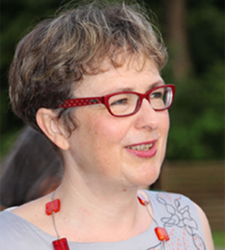
Ildikó Gericsné Fehér received an MA and PhD in art history from Eötvös Loránd University in Budapest, Hungary. As associate professor in the Department of Art History of the Hungarian University of Fine Arts in Budapest, she lectures and leads seminars on Renaissance and Baroque art. She is also a consultant to the university’s Conservation Department. Fehér’s research interests include detached wall paintings from medieval and Renaissance Italy in the collection of the Museum of Fine Arts Budapest; Florentine art dealers at the end of the nineteenth century; Károly Pulszky’s purchases of paintings in Italy for the museum circa 1890; wall paintings in Umbria from the fourteenth to sixteenth century; self-portraits by Hungarian artists in the Uffizi Gallery; and the works of Jacopo Palma il Giovane.
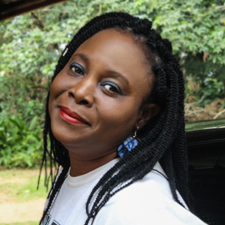
Peju Layiwola is an artist and professor of art history, Department of Creative Arts, University of Lagos, Nigeria. Through her writing and multimedia works Layiwola has addressed the tragic impact of the British Expedition to Benin, Nigeria, in 1897. Her focus on memory, Benin art and culture, and female participation in the visual arts in Nigeria has led to several articles in edited volumes such as Benin Kings and Rituals: Court Arts from Nigeria (2007), Writing African Women: Gender, Popular Culture and Literature in West Africa (1997) and N.Paradoxa, an international feminist journal (2013). Layiwola’s art has featured in several exhibitions within and outside Nigeria, including Benin1897.com: Art and the Restitution Question (Main Auditorium Gallery, University of Lagos, 2010), Whose Centenary? (Igun Street, Benin City, 2014) and a traveling exhibition Boundary Object organized by Artefakte, Berlin (Dresden, Madrid, 2015-16). She is currently head of the Department of Creative Arts, University of Lagos, Nigeria.
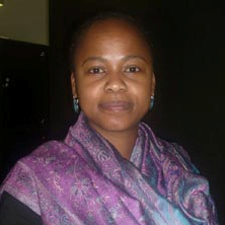
Nomusa Makhubu holds a PhD in art history and visual culture from Rhodes University, South Africa. A senior lecturer of art history at the University of Cape Town’s Michaelis School of Fine Art, Makhubu studies art interventionism, popular culture, and social engagement in African visual art. She is the recipient of the ABSA L’Atelier Gerard Sekoto Award (2006), the Prix du Studio National des Arts Contemporain, Le Fresnoy (2014) and the First Runner Up in the Department of Science and Technology (DST) Women in Science Awards (2017). Makhubu is a member of the South African Young Academy of Science and Chair of the Africa South Art Initiative. In 2016, she was a fellow of the American Council of Learned Societies and an African Studies Association (ASA) Presidential Fellow. Makhubu is currently an Institute for Creative Arts fellow (University of Cape Town) and a Mandela-Mellon Fellow at the Hutchins Center for African and African American Studies, Harvard University.



